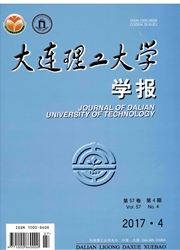

 中文摘要:
中文摘要:
从分析电火花加工中3种放电状态占有率的角度,论述了放电参数和控制参数对放电状态的影响规律,得出了放电参数的选择原则,即适当增加开路电压、降低峰值电流可以提高加工效率和保证加工表面质量;同时发现脉冲间隔时间对短路率、火花/拉弧率和击穿延时率的影响较大,调整脉间对实现加工过程的稳定控制更为有效.此外。根据电火花加工中影响放电状态的因素多且复杂的实际情况,利用辅助变量法无需研究噪声具体结构形式,即可以得到参数无偏辨识模型的特点,结合对电火花加工系统动态特性的认识,对有偏辨识模型进行了进一步的探讨,得到了损失函数小、预测精度高、实际操作性强的无偏辨识模型.
 英文摘要:
英文摘要:
By analyzing the proportion of three discharging states, the relationship between the discharging states and the discharging and controlling parameters in electrical discharge machining (EDM) is presented. The selection principle of discharging parameters is obtained, that is, appropriately increasing the open circuit voltage and lowering the peak current can enhance the processing efficiency and ensure good surface quality. Meanwhile, pulse-off has a greater effect on the short ratio, spark/arc ratio and discharging delay ratio, so adjusting the pulse-off can achieve a more stable control. Besides, according to the numerous and complex influencing factors of discharging states, instrumental variable method is used to further handle the biased autoregression model. The treatment of autoregression model by instrumental variable method, supplemented by the understanding of the dynamic properties of the EDM system, induces the applicable unbiased model with comparatively small loss function and high predictive precision.
 同期刊论文项目
同期刊论文项目
 同项目期刊论文
同项目期刊论文
 期刊信息
期刊信息
